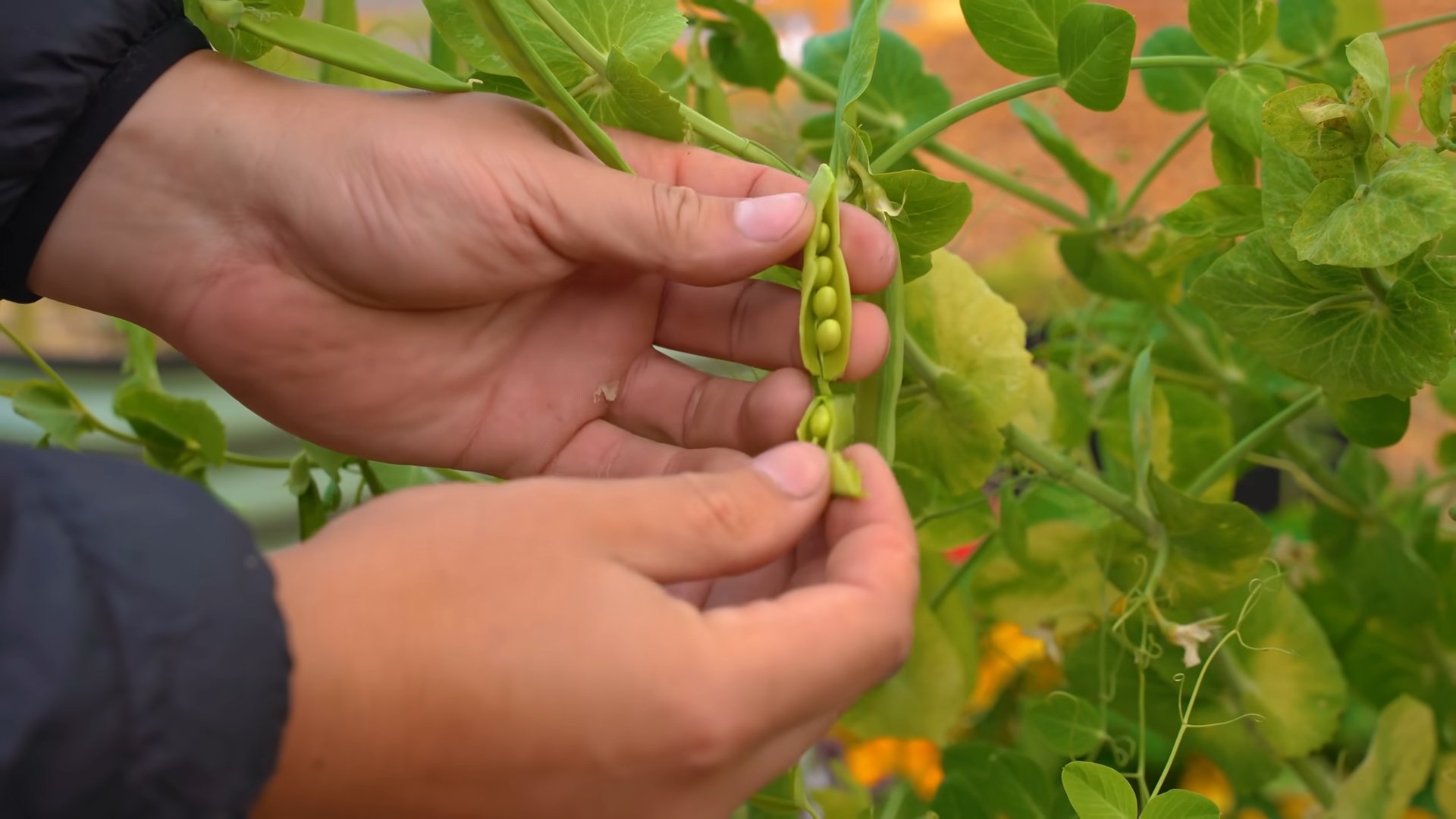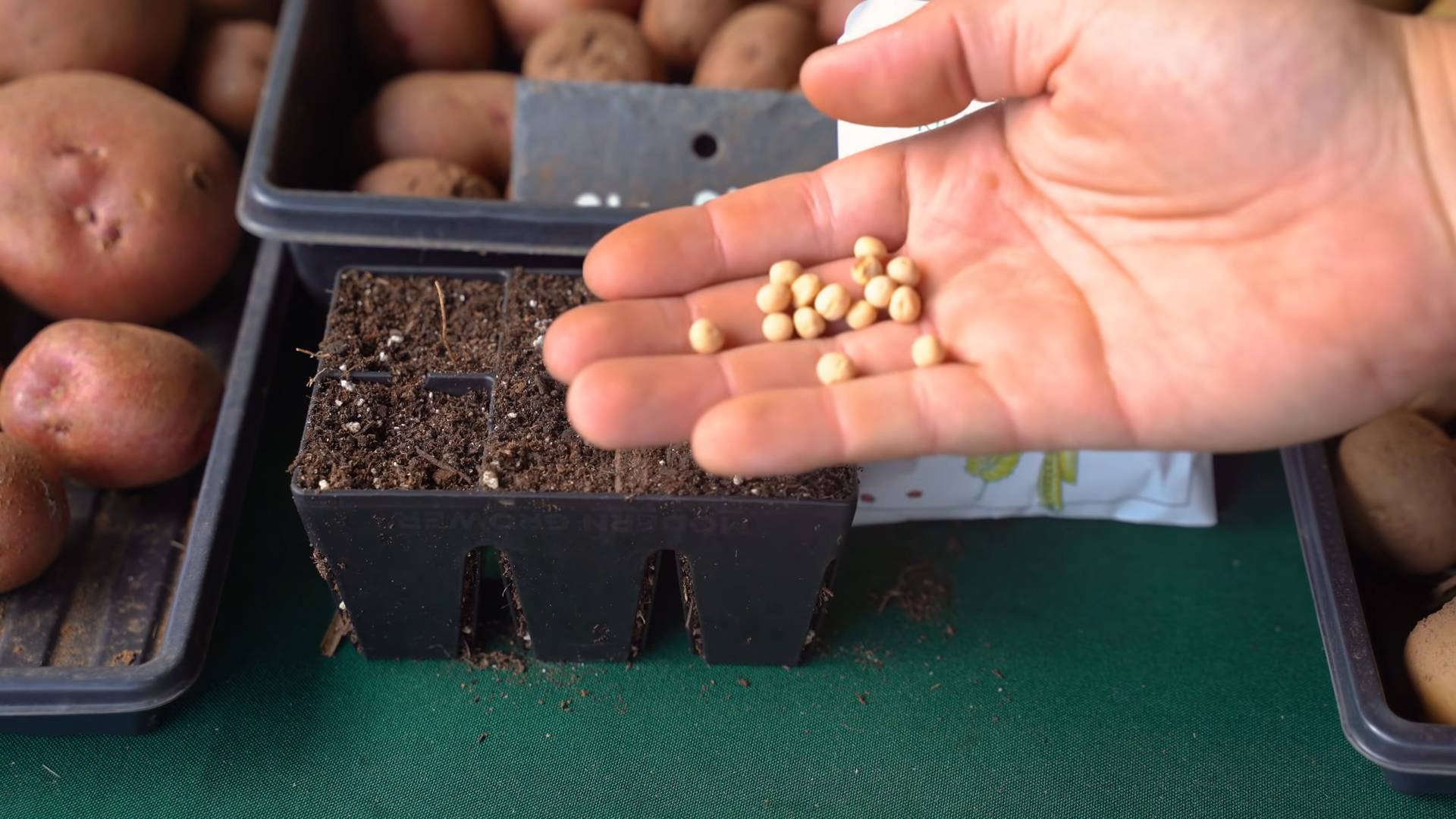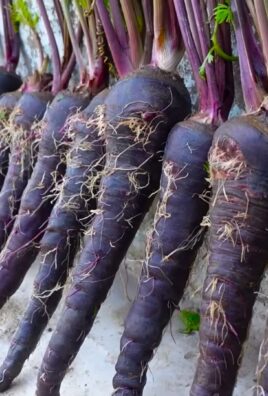Grow Peas Indoors? Absolutely! Imagine harvesting fresh, sweet peas right from your windowsill, even in the dead of winter. It sounds like a gardener’s dream, doesn’t it? Well, it’s a dream within reach, and I’m here to show you how with some simple DIY tricks and hacks.
For centuries, peas have been a staple crop, providing sustenance and joy across cultures. From ancient civilizations to modern-day gardens, their versatility and deliciousness have made them a beloved vegetable. While traditionally grown outdoors, the desire for fresh produce year-round has led to innovative techniques like indoor gardening.
Let’s face it, not everyone has access to a sprawling garden, and unpredictable weather can wreak havoc on outdoor crops. That’s where the magic of growing peas indoors comes in! This DIY guide will empower you to cultivate your own little pea patch, regardless of your living situation or the season. I’ll walk you through everything from selecting the right pea varieties to providing the perfect growing conditions. You’ll discover how easy it is to grow peas indoors and enjoy the satisfaction of harvesting your own homegrown goodness. Get ready to unleash your inner gardener and bring a touch of spring into your home, all year round!

Growing Peas Indoors: A Comprehensive DIY Guide
Hey there, fellow gardening enthusiasts! Ever dreamt of fresh, sweet peas even when the weather outside is frightful? Well, dream no more! I’m going to walk you through the surprisingly simple process of growing peas indoors. It’s a rewarding experience, and trust me, nothing beats the taste of homegrown peas, especially when you’ve nurtured them from seed to pod right in your own home.
Choosing the Right Pea Variety
First things first, not all pea varieties are created equal when it comes to indoor growing. We need to pick varieties that are compact and don’t require extensive support. Here’s what I recommend:
* Bush Peas: These are your best bet! They stay relatively short and bushy, making them perfect for containers. Look for varieties like ‘Little Marvel,’ ‘Tom Thumb,’ or ‘Sugar Ann.’
* Dwarf Snow Peas: These are also a great option. They produce edible pods that are delicious in stir-fries and salads. ‘Snowbird’ is a popular dwarf snow pea variety.
* Avoid Vining Peas: These types, like ‘Telephone’ or ‘Mammoth Melting Sugar,’ can grow incredibly tall and require a lot of support, making them less suitable for indoor spaces.
Gathering Your Supplies
Okay, now that we’ve got our pea variety sorted, let’s gather everything we need. Here’s a checklist:
* Pea Seeds: Obviously! Make sure they’re fresh for the best germination rate.
* Containers: Choose containers that are at least 6 inches deep and wide. Peas need room for their roots to grow. I prefer using pots that are 8-10 inches deep. You can use plastic pots, terracotta pots, or even repurposed containers like buckets or tubs. Just make sure they have drainage holes!
* Potting Mix: Use a high-quality, well-draining potting mix. Avoid using garden soil, as it can compact and not drain well in containers. I like to use a mix that contains peat moss, perlite, and vermiculite.
* Grow Lights (Optional but Recommended): While peas can grow near a sunny window, they’ll thrive with supplemental grow lights, especially during the shorter days of winter.
* Support Structure (Optional): Even bush peas can benefit from some support, especially as they start to produce pods. You can use small trellises, bamboo stakes, or even just some twigs stuck into the soil.
* Watering Can or Spray Bottle: For gentle watering.
* Seed Starting Tray (Optional): If you prefer to start your seeds indoors before transplanting.
Step-by-Step Planting Guide
Alright, let’s get our hands dirty! Here’s how to plant your pea seeds indoors:
1. Soak the Seeds (Optional but Recommended): Soaking your pea seeds in water for 12-24 hours before planting can significantly improve germination rates. Just place the seeds in a bowl of water and let them sit.
2. Prepare Your Containers: Fill your containers with potting mix, leaving about an inch of space at the top. Gently tap the container to settle the soil.
3. Plant the Seeds: Sow the pea seeds about 1 inch deep and 1-2 inches apart. You can plant multiple seeds in each container, but don’t overcrowd them.
4. Water Gently: Water the soil thoroughly but gently, making sure not to dislodge the seeds. You want the soil to be moist but not soggy.
5. Provide Light: Place your containers in a sunny location that receives at least 6 hours of direct sunlight per day. If you’re using grow lights, position them a few inches above the soil surface and keep them on for 12-16 hours per day.
6. Maintain Moisture: Keep the soil consistently moist but not waterlogged. Check the soil moisture regularly by sticking your finger into the soil. If the top inch feels dry, it’s time to water.
7. Provide Support (If Needed): Once your pea plants start to grow taller, you can provide them with a support structure. Insert small trellises or bamboo stakes into the soil near the plants and gently tie the stems to the support.
Caring for Your Indoor Pea Plants
Now that your pea plants are growing, it’s important to provide them with the right care to ensure a bountiful harvest.
* Watering: As I mentioned before, keep the soil consistently moist but not waterlogged. Overwatering can lead to root rot, so be careful not to overdo it.
* Fertilizing: Peas are relatively light feeders, but they can benefit from occasional fertilization. Use a balanced liquid fertilizer diluted to half strength every 2-3 weeks.
* Temperature: Peas prefer cooler temperatures, ideally between 60-70°F (15-21°C). Avoid placing them near heat sources or in drafty areas.
* Air Circulation: Good air circulation is important to prevent fungal diseases. Make sure your plants have enough space between them and that the air is circulating freely. A small fan can help with this.
* Pest Control: Keep an eye out for common pests like aphids and spider mites. If you spot any pests, you can try spraying them with insecticidal soap or neem oil.
* Pollination: Peas are self-pollinating, so you don’t need to worry about hand-pollinating them. However, you can gently shake the plants occasionally to help distribute the pollen.
Harvesting Your Indoor Peas
The best part! Harvesting your own homegrown peas is incredibly satisfying. Here’s what you need to know:
* Timing: The time it takes for peas to mature depends on the variety you’re growing. Generally, you can expect to start harvesting peas about 60-70 days after planting.
* Harvesting Shelling Peas: Harvest shelling peas when the pods are plump and filled with peas. The pods should be firm and slightly rounded.
* Harvesting Snow Peas: Harvest snow peas when the pods are flat and tender. The peas inside should be small and undeveloped.
* Harvesting Snap Peas: Harvest snap peas when the pods are plump and crisp. The peas inside should be well-developed but not too large.
* How to Harvest: Gently snap the pods off the plant, being careful not to damage the stems. Harvest regularly to encourage continued production.
Troubleshooting Common Problems
Even with the best care, you might encounter some problems while growing peas indoors. Here are a few common issues and how to address them:
* Poor Germination: If your pea seeds aren’t germinating, make sure they’re fresh and that the soil is moist but not waterlogged. You can also try scarifying the seeds by gently nicking the outer coating with a knife before planting.
* Yellowing Leaves: Yellowing leaves can be a sign of overwatering, underwatering, or nutrient deficiency. Check the soil moisture and adjust your watering accordingly. You can also try fertilizing your plants with a balanced liquid fertilizer.
* Leggy Growth: Leggy growth, where the plants are tall and spindly, is usually caused by insufficient light. Make sure your plants are receiving enough sunlight or grow light.
* Powdery Mildew: Powdery mildew is a fungal disease that can affect pea plants. It appears as a white, powdery coating on the leaves. To prevent powdery mildew, provide good air circulation and avoid overhead watering. If you see signs of powdery mildew, you can try spraying the plants with a fungicide.
* Aphids: Aphids are small, sap-sucking insects that can infest pea plants. They can cause the leaves to curl and distort. To control aphids, you can try spraying them with insecticidal soap or neem oil.
Enjoying Your Harvest
Congratulations! You’ve successfully grown peas indoors. Now it’s time to enjoy the fruits (or rather, vegetables) of your labor. Freshly harvested peas are delicious eaten raw, steamed, stir-fried, or added to soups and salads. You can also freeze or can your peas to enjoy them later.
Growing peas indoors is a fun and rewarding experience. With a little bit of care and attention, you can enjoy fresh, homegrown peas all year round. Happy gardening!

Conclusion
So, there you have it! Growing peas indoors is not only achievable, but it’s also a remarkably rewarding experience. Forget relying solely on the unpredictable whims of outdoor weather and embrace the control and convenience of cultivating your own fresh, sweet peas right in your home. This DIY trick transforms your kitchen counter, balcony, or even a sunny windowsill into a miniature pea patch, offering a taste of spring even in the dead of winter.
Why is this a must-try? Because it’s more than just growing food; it’s about connecting with nature, understanding the life cycle of plants, and enjoying the unparalleled flavor of homegrown produce. Store-bought peas simply can’t compare to the crisp, sugary sweetness of peas you’ve nurtured from seed to pod. Plus, it’s an incredibly satisfying project, especially for those with limited outdoor space or those eager to extend the growing season.
But the beauty of this DIY endeavor lies in its adaptability. Feel free to experiment with different pea varieties. Consider bush peas for their compact growth habit, making them ideal for smaller containers. Or, if you have a bit more space, try climbing peas and provide them with a trellis or support structure to create a stunning vertical garden. You can also play around with different potting mixes to find what works best for your growing environment. Some gardeners swear by a mix of compost, perlite, and vermiculite, while others prefer a simple, well-draining potting soil.
Don’t be afraid to get creative with your container choices, either. While standard pots work perfectly well, you can also repurpose items like buckets, crates, or even old laundry baskets (just be sure to drill drainage holes!). The key is to ensure your container is large enough to accommodate the pea plants’ root systems and provides adequate drainage to prevent waterlogging.
And remember, growing peas indoors is a learning process. You might encounter challenges along the way, such as pests or diseases. But don’t let that discourage you! With a little research and persistence, you can overcome these obstacles and enjoy a bountiful harvest.
We wholeheartedly encourage you to give this DIY trick a try. It’s a simple, affordable, and incredibly rewarding way to bring a touch of nature into your home and enjoy the delicious taste of homegrown peas. Once you’ve experienced the joy of harvesting your own sweet, tender peas, you’ll never look at store-bought peas the same way again.
So, grab some seeds, gather your supplies, and get ready to embark on your indoor pea-growing adventure! And most importantly, don’t forget to share your experiences with us. We’d love to hear about your successes, your challenges, and any tips or tricks you’ve discovered along the way. Share your photos and stories on social media using [Insert relevant hashtag here] and let’s create a community of indoor pea-growing enthusiasts! Let’s all learn how to grow peas indoors together!
Frequently Asked Questions (FAQ)
What are the best pea varieties to grow indoors?
While many pea varieties can be grown indoors, bush peas are generally recommended due to their compact size and suitability for container gardening. Popular bush pea varieties include ‘Little Marvel,’ ‘Sugar Ann,’ and ‘Patio Pride.’ These varieties don’t require extensive trellising and are well-suited for smaller spaces. However, if you have more vertical space, you can certainly try climbing pea varieties like ‘Sugar Snap’ or ‘Oregon Sugar Pod,’ but you’ll need to provide them with a sturdy trellis or support structure. Consider the amount of space you have available and your personal preferences when selecting your pea variety.
How much sunlight do indoor peas need?
Peas require at least 6-8 hours of direct sunlight per day to thrive. If you don’t have a south-facing window that provides sufficient sunlight, you may need to supplement with artificial grow lights. Fluorescent or LED grow lights are excellent options for indoor gardening. Position the lights a few inches above the pea plants and adjust the height as they grow. Rotate your pea plants regularly to ensure even light exposure on all sides. Insufficient sunlight can lead to leggy growth and reduced yields.
What type of soil is best for growing peas indoors?
Peas prefer well-draining soil that is rich in organic matter. A good potting mix for indoor peas should consist of a combination of compost, perlite, and vermiculite. Compost provides essential nutrients, while perlite and vermiculite improve drainage and aeration. Avoid using garden soil, as it can be too heavy and may contain pests or diseases. Ensure the soil pH is slightly acidic to neutral, around 6.0 to 7.0. You can test the soil pH using a soil testing kit.
How often should I water my indoor pea plants?
Water your indoor pea plants regularly, keeping the soil consistently moist but not waterlogged. Check the soil moisture level daily by sticking your finger about an inch into the soil. If the soil feels dry to the touch, it’s time to water. Water deeply, allowing excess water to drain out of the bottom of the container. Avoid overwatering, as this can lead to root rot. Adjust your watering frequency based on the temperature, humidity, and sunlight exposure in your growing environment.
Do I need to fertilize my indoor pea plants?
Peas are relatively light feeders, but they will benefit from occasional fertilization. Use a balanced liquid fertilizer diluted to half strength every 2-3 weeks. Look for a fertilizer with an NPK ratio of around 10-10-10. Avoid over-fertilizing, as this can lead to excessive foliage growth at the expense of pod production. You can also amend the soil with compost or worm castings to provide a slow-release source of nutrients.
How long does it take for peas to mature indoors?
The time it takes for peas to mature indoors depends on the variety and growing conditions. Generally, it takes about 60-70 days from planting to harvest. Bush peas tend to mature slightly faster than climbing peas. Monitor your pea plants closely and harvest the pods when they are plump and filled with peas. Regular harvesting encourages continued pod production.
What are some common pests and diseases that affect indoor pea plants?
Common pests that can affect indoor pea plants include aphids, spider mites, and whiteflies. These pests can be controlled with insecticidal soap or neem oil. Diseases that can affect indoor pea plants include powdery mildew and root rot. Powdery mildew can be prevented by ensuring good air circulation and avoiding overhead watering. Root rot can be prevented by using well-draining soil and avoiding overwatering. Regularly inspect your pea plants for signs of pests or diseases and take action promptly to prevent them from spreading.
How do I support climbing pea varieties indoors?
Climbing pea varieties require a trellis or other support structure to climb on. You can use a variety of materials to create a trellis, such as bamboo stakes, netting, or even repurposed household items like old ladders or clothes racks. Position the trellis behind the pea plants and gently guide the tendrils onto the support structure. As the pea plants grow, they will naturally cling to the trellis. Ensure the trellis is sturdy enough to support the weight of the mature pea plants.
Can I grow peas indoors year-round?
Yes, you can grow peas indoors year-round, provided you have adequate light and temperature control. Peas prefer cooler temperatures, around 60-70°F (15-21°C). If your home is too warm, you may need to provide supplemental cooling. You’ll also need to ensure your pea plants receive sufficient light, either from natural sunlight or grow lights. With proper care, you can enjoy a continuous harvest of fresh peas throughout the year.
What do I do with my pea plants after they finish producing?
Once your pea plants have finished producing, you can compost them or use them as green manure in your garden. Peas are nitrogen-fixing plants, meaning they add nitrogen to the soil. This can benefit other plants that are grown in the same area. Alternatively, you can simply discard the pea plants.





Leave a Comment